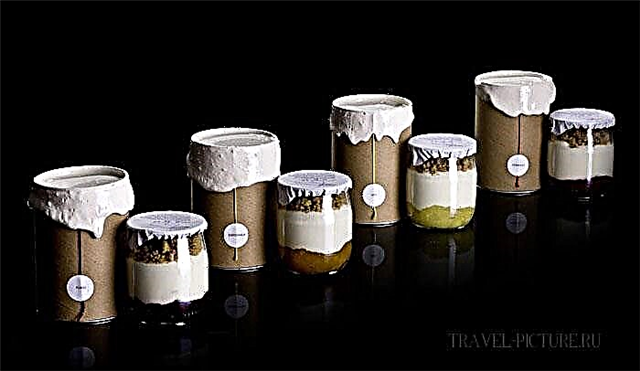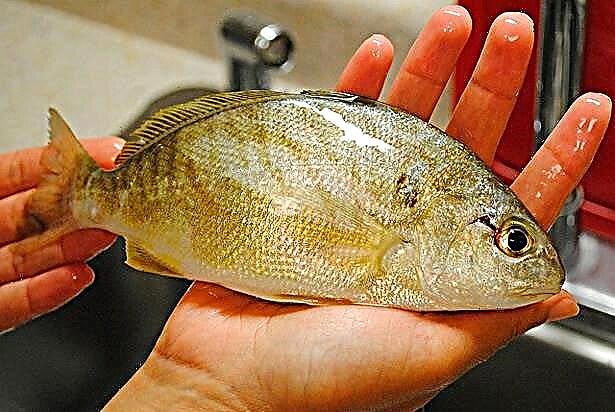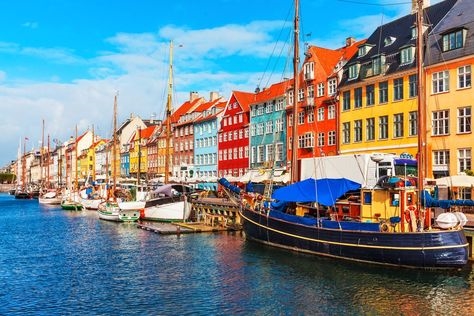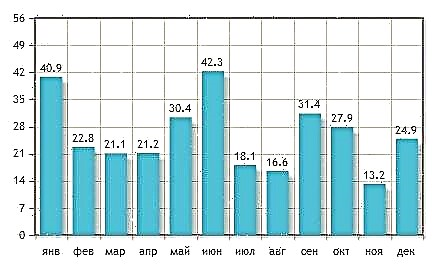What to try in Spain? Spanish cuisine is a national cuisine that has developed from different culinary traditions in all regions of Spain. In Spanish cuisine, one can note a large predominance of meat dishes, which we have already talked about in our trip to Barcelona, least of all fish dishes can be found in this cuisine. Among the national meat dishes of the Spanish cuisine, one can distinguish "Jamon" - a meat ham cooked and dried with spices is a must.
And you can try everything that will be discussed in this article on your own, it is not so difficult now to make a couple of clicks and the journey is ready. For example, booking an inexpensive hotel and buying a cheap air ticket has now become easy, and you don't need special knowledge and skills to start traveling on your own!
Olive oil, garlic, aromatic herbs and wine in this cuisine are indispensable ingredients for the preparation of the country's national dishes, but it is worth noting that until the 20th century, only animal fats were used in Spain for cooking. Moreover, the climate of the Spanish continent allows the Spaniards to grow all the ingredients in their territory, keeping all the traditions of Spanish cuisine.
According to its geographical location, Spanish cuisine is divided into several cuisines in different regions of the country. For example, on the northern coast of the Atlantic Basque cuisine is clearly expressed (the basis of this cuisine is seafood, fish, beef). Cantabrian cuisine in Spain is distinguished by an abundance of trout, sardines, shellfish, salmon. Asturian cuisine is famous for various types of sausages, beans and bacon. The northwestern cuisine of Spain is distinguished by pork legs, rutabagas, fish, octopus.
Catalan cuisine is a mixture of French and Italian cuisine, based on tomato sauces, onions, garlic, herbs and peppers. In Castile, you can sample roast suckling pig and roast lamb, a region that is the parent of roast meats. All the dishes in different regions of the country are varied, you can't try everything, but you can still choose several types from the dishes of Spanish cuisine.
Snacks (called Tapas in Spain) of Spanish cuisine can surprise any tourist. Topaz Bar is a street fast food where you can taste different kinds of snacks. Topaz bars for the Spanish population are an integral part of life, there are always a lot of people here. Among the popular snacks, it is worth noting olives with lemon, sandwiches, fried calamari and shrimp, jamon, cheese. Pies with various fillings of meat, fish, vegetables are also an integral part of snacks.

What to try in Spain from salads? Salads are traditionally prepared at lunchtime, always from fresh or boiled vegetables, seafood (shrimp, mussels, squid). A must-have salad dressing is olive oil and vinegar. One of the favorite salads is the “tomato with garlic” dish (it includes tomatoes, garlic and sprinkled with herbs and olive oil dressing).


What to try in Spain from soups? Soups are served here after salads. Soups in this country are either filling or mashed soup. The national Spanish soups are Olia Podrida, a thick soup with stews and vegetables, and Gazpacho, a cold vegetable soup consisting of tomatoes, garlic, spices, olive oil and bread.


Fish dishes in Spain are an integral part of traditional cuisine. The main fish is Tuna, which is prepared immediately after being caught at sea. Fish dishes are served on the table in Spain very often, unlike other traditional dishes. Spanish cuisine is the second in the world after Japan for the consumption of seafood; of the most favorite types of seafood among the Spaniards, one can single out shrimps, mussels, scallops, and oysters.

Meat dishes are famous for their huge portions of fried or felted meat with spices. The most important meat dish is Jamon (ham) - felted pork leg, which is first salted, then dried and dried according to ancient Spanish traditions. You can taste Jamon in any restaurant, we will tell you about one of the restaurants ...

Which restaurant should you go to?
Restaurant "4Gats" located at st. Montsio 3. This Spanish restaurant is famous mainly for the tourist flow with the "fat wallet" who decided to taste the jamon. It was in this restaurant that Picasso himself held an exhibition of his paintings and designed the menu of the 4Gats restaurant, so the menu of this restaurant has remained unchanged for many years.

The prices of the restaurant 4 Gats are rather big, for example, Greek salad will cost you 17 euros, Paella costs 35 euros, entrecote 34 euros, hot dishes about 45 euros, wine reaches several thousand euros.
Let's be honest, restaurants in Spain are not very popular with the local population and are mainly aimed at tourists. Spanish cuisine is so colorful that the local population is used to cooking at home according to their secret recipes and eating in family circles.
Now let's talk a little about the poultry, which also takes pride of place in Spanish cuisine. As a rule, chicken meat prevails in poultry cuisine in Spain. Depending on the region of the country, chicken meat is cooked on a spit or wire rack, served in tomato sauce with vegetables.
Desserts here, by and large, are developed only because of tourists who really like the local dessert called "turron" - nougat with nuts, made from honey, egg white and nuts. The production of turron has been known since ancient times, its recipe came from the Arabs, who began to prepare turron about a thousand years ago.

Dessert Polvorona (powder dust) is another of the sweets of Spanish cuisine, without which no festive table in Spain can do. Polvorons are crumbly biscuits made in pork fat with the addition of almonds and cinnamon, filled with chocolate or lemon. Another sweetness in Spain is creams and puddings, consisting of yolk, sugar, milk, cinnamon, lemon.

- Prices for food and meals →
What cheeses to try in Spain?
Spanish cuisine is also famous for its cheeses; cheese production in Spain is developed in all its regions. Unlike France, in Spain, cheese is served simply cut into slices or with bread. A famous Spanish cheese is “Cabrales” with blue mold, it contains cow's, goat's or sheep's milk. When preparing, this cheese is necessarily covered with animal excrement and wrapped in maple leaves, which gives the cheese a very pungent smell and pungent taste.

The variety of Spanish cuisine includes several dozen different types of cheeses. Each region of Spain is famous for its different types of cheese. One of them is the "indiasable" from the Basque Country made from sheep's milk and beech wood smoked over coals. In Castile, proud of cheese - "La Manche", made from pasteurized sheep's milk.
In Leon they produce "Burgos cheese" - it is unleavened or salty made from young sheep's milk. In Catalonia, cheese is produced only from goat's milk, from which hard types of cheeses are obtained, one of which is montsec cheese, grated with ash after cooking. In the Balearic Islands, mahon cheese is prepared, it contains cow's milk and spices.


What to try from wine and spirits?
Now let's talk about drinking Spanish cuisine, which includes alcohol. It also has its own national alcoholic drinks, which are produced by distillation and fermentation of fruit raw materials.
The wine produced on the Spanish continent is famous for one of its types - Jerez, a strong wine made from several varieties of grapes, the ancient name of this wine is “Sherish”, from which the name Jerez originated. By the way, you can read about wine varieties in our article. Wine in Spain is consumed in huge quantities, it is simply an integral part of the table in Spanish cuisine. If you do not know how to choose wine for a particular dish, then read our article on choosing wine.

Spain has about 60 wine-growing regions in which about 90 varieties of grapes grow. We already wrote about some grape varieties in the previous article. So, one of the drinks of Spanish cuisine is "Sangria" - a national Spanish alcoholic drink made from dry red wine, with a small addition of sugar, spices, various fruits, maybe even an orange. Translated from Spanish, Sangria means blood, which shows its red color.
The next traditional drink is called Cider. This drink is made mainly in northern Spain and comes in two varieties - sparkling and natural cider. Natural cider in Spain is valued most of all, its strength is 7%. Sparkling cider is a semi-dry, low-alcohol beverage with little added sugar. Its fortress is 4%.
Liqueurs are in second place after wine. The most favorite type of liqueur here are drinks with a taste of spices and spices. For example, a liqueur called Licor23 has 23 different ingredients, most of the ingredients are herbs. Hierbas de Mallorca contains 25 different types of herbs, some of which are mint, rosemary, myrtle and others. Pacharan liqueur consists of blackthorn berries, anise and fruit additives. Palo liqueur contains cinnamon, sugar, nutmeg, carob.
Also, Spanish cuisine is famous for its fruit liqueurs, which are produced in the southern regions of the country. Licor de Manzanas is made only from apples, Licorde Melocotones from juicy peaches, Licorde Fresas from ripe strawberries, Licorde Platanos from slightly overripe bananas, Licorde Cantueso consists of lavender and cinnamon leaves, and many other liqueurs ...
Milk yoghurt is a common soft drink in Spanish cuisine. Yoghurt and dessert boutiques are waiting for you at every step, do not pass by, be sure to try a yoghurt drink prepared according to the secrets of Spanish cuisine.
- The best tours to Spain →

What to try in Spain? We talked about traditional Spanish cuisine. It should be noted that the Spanish cuisine is very tasty, the abundance of spices makes any dish simply amazing, and the wine from different grape varieties will captivate you with its bright bouquet of aromas. Having tasted the cuisine of this country at least once, you will become a part of the national culture of the people of this country and plunge into the ancient world of traditions. Read us on other travels around the globe on travel-picture.ru











